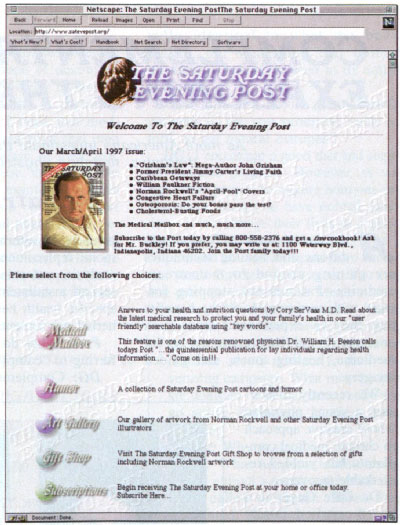Innocent Days on the Internet
“The Internet can and will change your life.”
Readers who saw those words in a 1997 Post article might have easily dismissed them as journalistic hype. The Internet was still quite young and unexplored in those days. It gave little indication it would grow into the force that would reshape America’s economy, politics, society, education, and arts.
It had been developing slowly and quietly. While the first tests of the Internet took place in November 1969, as late as 1993, there were only 50 websites in operation. The first secure online purchase wasn’t made until August 1994 (when a Web developer bought a copy of Sting’s CD Ten Summoner’s Tales.)

Web traffic was climbing steadily, though, and the number of Internet users doubled every year. By 1997, over 70 million people around the world were online. But this was still less than 2 percent of the planet’s population. Large sections of Americans were only vaguely aware of this thing called the World Wide Web. The Post article, “Trekking the Internet,” probably introduced many readers to such terms as “HTML” and “browser” and “URL” (“pronounced ‘You Are Ell,’” the authors helpfully added).
We’re now so accustomed to the Internet that it’s amusing to read the authors’ comments on basic operations. “You can ‘save your place’ on the Web and create a list of your own favorite sites. The list of personal favorites is usually referred to in the software as the … Bookmarks section.”
Though some of the players they describe have passed from prominence — America Online’s WebCrawler and CompuServe’s NetLauncher — the Internet is still much as they described it then: “fascinating, stimulating, and thought-provoking … also silly, irreverent, and mundane.”
The biggest difference between then and now, though, is the Internet’s attitude toward commercialization. The article reported that Internet users and service providers would tolerate no advertising on the Web. When two attorneys sent a spammed advertisement to thousands of newsgroups in 1994, the Internet “responded swiftly and with considerable ferocity. All messages originating from [the lawyers] were intercepted and destroyed. Their fax machine was swamped by a flood of dummy calls, effectively disabling their machine. Their service provider was also deluged and cut off [the lawyers’] service. … They went to another service provider who offered them the same discourtesy.”
Perhaps it was naive to think the Web could remain commercial-free. Back in the 1920s, many Americans had expected radio would remain free of advertising, and America’s airwaves unsullied by singing jingles for scouring powder and deodorant. But radio went commercial, as did the Internet.
Unlike radio, however, the Internet allows users to intercept and block the advertising sent at them. Ad blockers are becoming so efficient that advertisers are starting to worry.
It’s likely that ad blocking will change the amount and type of advertising we see on the Web. But then, change is perhaps the only constant in the digital world.